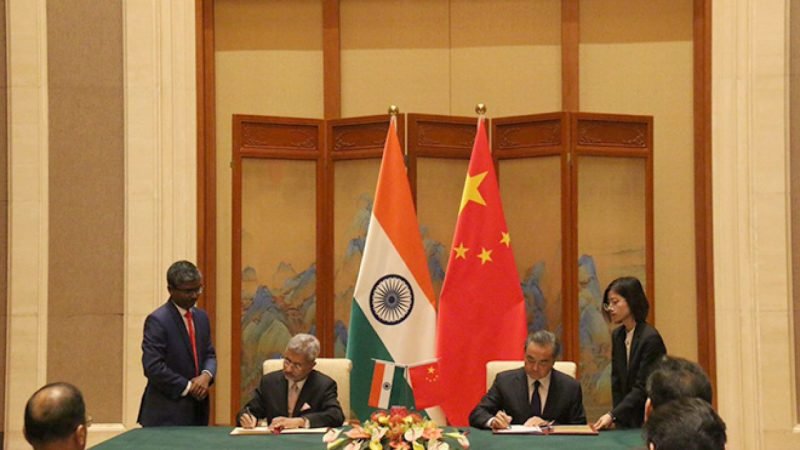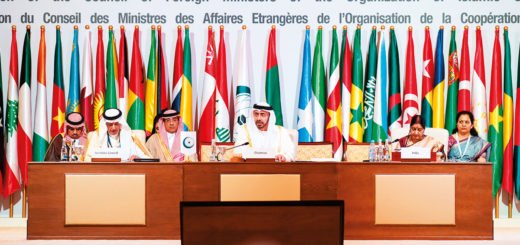Five-point agreement between India and China: What to expect

Amidst tensed situations at LAC, Foreign minister S Jaishankar reached Russia this Tuesday, for the SCO meeting where foreign ministers of the SCO nations held SCO ministerial meet hosted by Moscow. The Indian and Chinese Foreign Ministers came face to face at three events during the day, first, in the SCO ministerial meeting, second in the RIC meet and thirdly in the bilateral meeting of India and China.
A Moscow miracle was expected out of the event that could prove an icebreaker in easing out tensions at the borders. After the successful SCO ministerial meet, FM Jaishankar holds bilateral meetings starting with his Russian counterpart Sergey Lavrov, where the two-sided focused on aspects of bilateral and regional concerns. They also reflected upon the Special and privileged Strategic Partnership between the two countries. But regarding India China tensions, Russia has adopted a policy of ‘Non-Interference’ between bilateral issues of India and China. However, it encouraged resolution and propagated its firm resolve to see de-escalation and disengagement through talks in eastern Ladakh. A senior Russian diplomat said that Moscow is focussed on creating a positive atmosphere for it. and ruled out any possibility of Russia playing a mediating role unless it is asked by both the sides.
Pakistan is also being represented by Pak FM Shah Mehmood Qureshi, But India made it clear that it will continue its Zero Diplomacy policy with Islamabad so long it does not shun terror and there will be no meeting with Pakistan on the side-lines of SCO meet.
However, the eyes were on the India- china bilateral talks. The two ministers have spoken over phone once after the deadly clash over the Galwan valley. But this time, it was a 3-hour in-person conversation between the two sides that held two days after the meet of defence ministers of both the nations. Both sides have many conversations at the top level but it is first time that both sides have issued a joint statement that too at a very high level.

Both sides developed a very optimistic five-point peace charter for resolution of the border tensions. The joint statements talk on five parameters and the focus has accentuated on 3Ds, Distance, De-escalation and Disengagement at the LAC. They ensured that all the Lines of communication will remain open between both sides. The Indian side highlighted and called for an urgent resolution on its concerns regarding massive positioning of Chinese troops and their provocative behaviour at LAC. China acknowledged this consensus, to deescalate and disengage and stop provocations at the border immediately, it said that it is ready for dialogue. This meeting is expected to give ‘political guidance’ on the disengagement process. They focused on not carrying out any escalatory actions, Chinese side focused on that Night patrolling should not be conducted. Also, the Indian side has clearly stated that unless there is a settlement on the current tensions, it cannot be the ‘business as usual’. However Chinese side differed to delink border issue with the business.
The first point of charter readout that consensus reached out at the topmost leadership of the two nations, should be followed. And the differences should not be allowed to turn into disputes.
The second consensus propagated disengagement and distance at the border side because the tensions are not in either side’s interest.
Thirdly, Existing agreements and protocols on China-India border affairs must be respected by both sides. India and China have signed 5 protocols between 1993-2013.
The fourth was a call for dialogue through the Special Representative’s Mechanism to ensure that these things do not happen again.
Fifth stressed on the need to put in place more Confidence Building Measures (CBMs)
The five points can be surmised into one point. We expect the Chinese to move back to the positions that obtained on May 1, 2020, restore status quo ante. The agreement seems hopeful but not optimistic. The Chinese side has not talked explicitly on moving back their forces. Even if they seem faithful during the talks, but the world knows China. Chinese say one thing and do exactly the opposite. History is adamant proof. Eventually, words do not matter much, words need to turn into action at LAC. China is talking about easing tensions since May, NSA has met his counterpart, Defense ministers have met, FM has contacted two times, Brigade commanders are having engagements on the ground on a daily basis. But this all remains webbed in words; They’ve positioned themselves in large numbers at Lac and Situation at the borders still remains tense.

The two sides never stopped talking and this is somewhat missing between India and Pakistan. It is always good to carry on talks, but it should lead to something in the ground. This is a strange situation. Mao may have said talk-talk, fight-fight but this time it is more of talk-talk, threaten-threaten.
The damage they’ve inflicted on the ties, 40 years of understanding, 22 rounds of SR talks, two informal summits between the PM and Chinese President, all have been destroyed. It has thrown out of the window all the agreements, conventions, CBMs understandings at the apex level. So, to hope of immediate ease between the crisis is an unequivocal no. If looked at realistically, there are not enough reasons for optimism. We should never ever lower our guard. We should continue to have surveillance in these areas because Chinese are not to be easily trusted on.
There is an old Chinses saying that those who tie do not untie. It is very clear that it was the Chinese who has always been provocative not India. For decades, we’ve tried to be very mindful of Chinese concerns while they’ve not reciprocated at all. We’ve always hoped and strived for a modus vivendi. But we want to be peaceful neighbours but if they choose an aggressive path we’ll not be found wandering.


















